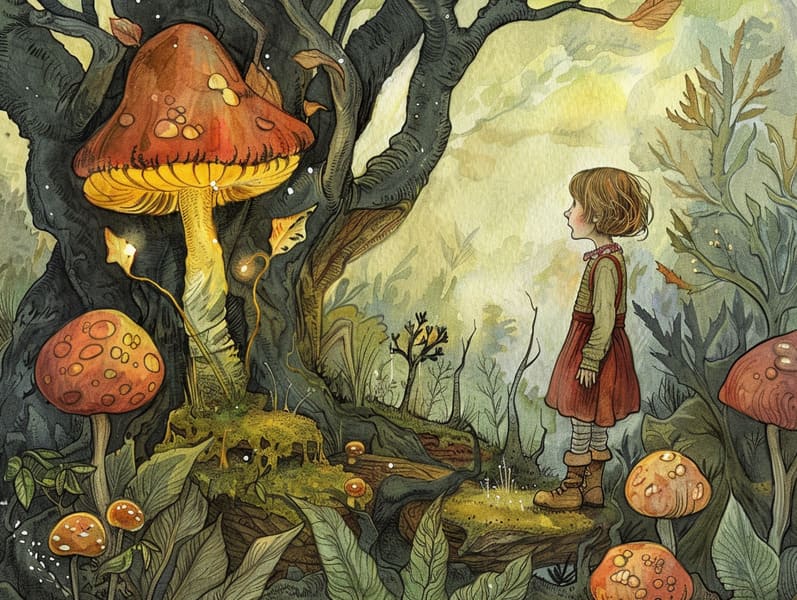
Best fairy tales have enduring presence. These stories have been recounted from one generation to the next millennia before they were ever published. They arose from a variety of backgrounds, including European traditions. They were initially passed along among grown-ups, often carrying themes and messages aligned with the societal norms and beliefs of the time.
The Grimm brothers, Jacob and Wilhelm (the Grimm brothers), were among the first to compile many of these beloved tales. Their anthology, "Grimm's Children's Stories," included tales like "The Story of Cinderella," "The Story of Hansel and Gretel," and "The True Story of Snow White," which have since become cornerstones in the world of traditional fairy tales. Similarly, Andersen's charming stories, such as "The Little Mermaid," and "The Ugly Duckling," have gained the love worldwide, ensuring their place in the pantheon of beloved fairy tales.
Though they are old, these tales remain as important as ever, especially as kids' bedtime tales. These magical stories are now available in various formats, including richly illustrated books, whimsical animations, and internet fairy tales.
Their enduring popularity can be connected to several charming aspects:
Vital Lessons: Ancient fairy tales often provide important moral lessons. Stories like "The Boy Who Cried Wolf" teach the significance of truth, while "The Hare and the Tortoise" demonstrate the benefits of perseverance and modesty. These narratives offer the young clear distinctions between virtue and vice, guiding their moral compass in a soft yet significant way.
Sympathy and Perception: Timeless fairy tales frequently depict heroes facing obstacles and hardships, inspiring readers to understand with their struggles and applaud their triumphs. For instance, "The Tale of Beauty and the Beast" shows us the significance of seeing inner beauty to recognize the true character of a character, promoting insight and understanding.
Cultural Comprehension: Many ancient fairy tales are rooted in the cultural contexts from which they originated. Immersing in these fairy tales can provide delightful insights into different traditions, strengthening a sense of cultural respect and recognition.
Imagination and Innovation: The mythical elements in timeless fairy tales—magical beings—generate children’s imaginative ideas. These fairy tales transport readers to extraordinary realms, stimulating fantastical thinking and a sense of marvel that lasts a lifetime.
Classic fairy tales are not only whimsical but also enlightening. They work as whimsical tools in fostering various cognitive and affective skills in children. When timeless fairy tales are spoken, they foster verbal development by showing new language and sophisticated sentence structures. This practice also enhances listening skills and attentiveness, as young ones hang on every word, anxious to see what happens next.
Furthermore, exploring the themes and characters of traditional fairy tales can improve thought processes and reasoning skills. Kids are shown to find patterns, make predictions, and know cause and effect. These website contemplations also boost children articulate their thoughts and feelings, adding to their emotional intelligence.
In today’s electronic age, the accessibility of digital fairy tales has made these fairy tales more available than ever. Websites and software extend broad selections of Grimm's fairy tales that can be browsed or listened to anytime, anywhere. Fairy tales read aloud are particularly in demand, making available an entertaining method for children to appreciate these entrancing tales. Read-aloud stories and narrated videos take characters and settings to life, often paired with captivating melodies and music that augment the tale experience.
The lasting appeal of classic fairy tales lies in their ability to modify to modern times while continuing with their main lessons. Contemporary adaptations of these fairy tales often integrate more diverse protagonists and modern settings, making them relatable to today’s audience. However, the key lessons of valour, kindness, and fair play remain unchanged, continuing to reach young listeners of all ages.
Traditional fairy tales also offer a sense of ease and knowability. They confer upon a systematic narrative with a evident beginning, middle, and end, often drawing to a close with the conclusion of conflicts and the triumph of honesty over deceit. This consistency can be reassuring for children, providing a sense of steadfastness in an variable world.
Classic fairy tales continue to allure and enlighten new generations, maintaining their beauty and impact in modern society. As kids' bedtime tales, they grant a perfect blend of fantasy and learning, boosting moral values, empathy, and creativity. The availability of digital storybooks and the popularity of fairy tales read out loud assure that these timeless tales remain reachable to new generations.
By guarding and disseminating these stories, we continue to praise the rich tapestry of inventiveness and cultural heritage. Whether you are delving into a vibrantly illustrated book, viewing a online collection, or listening through an read-aloud story, the loveliness of classic fairy tales is always within reach. These fairy tales reveal of the unfading effect of fairy tales and its ability to link us across eras and regions.
If you are experiencing a artistically illustrated book, delving into a digital library, or listening to an spoken story, the fascination of bedtime fairy tales is always within reach.
These fairy tales point out of the endless nature of storytelling and its ability to bind us across eras and regions, weaving a spell that charms and informs alike.